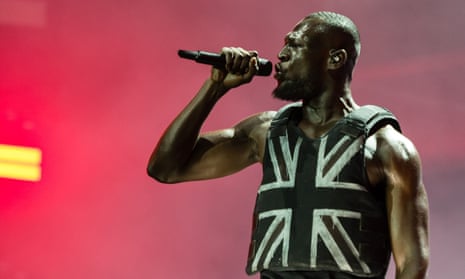When Stormzy took to Glastonbury’s Pyramid stage last Friday in a stab-proof vest designed by Banksy, it was called the “banner of a divided and frightened nation”.
The Guardian’s product and service reviews are independent and are in no way influenced by any advertiser or commercial initiative. We will earn a commission from the retailer if you buy something through an affiliate link. Learn more.
Lauded for making such a bold and public statement on knife violence and the systems around it, the words “knife crime” appeared lit up behind him during his performance, and there was an excerpt from a speech by David Lammy on the issue. The Labour MP for Tottenham then tweeted about it after the rapper’s set.
✊🏿👊🏿 @stormzy using his headline spot at #glastonburyfestival2019 to speak out about the injustice of young black kids being criminalised in a biased and disproportionate justice system. Humbled and inspired that he sampled my speech. Salute #Merky pic.twitter.com/iSG3PMssrd
— David Lammy (@DavidLammy) June 28, 2019
According to fashion psychologist Shakaila Forbes-Bell, Stormzy’s vest can be seen as a cry to the public that “young black men are literally living in a war zone”. Given the rapper has “positioned himself as a figurehead of the young black community in London, which has been plagued by knife crime”, she says, the garment could “be seen as a visual form of solidarity [with] these victims and families in the same way that the hoodie had been used after the murder of Trayvon Martin in Florida in 2012.”
But this is contested territory. Quite apart from those who use provocative dress as social comment are fashion brands designing stab-proof vests, or garments that mimic them. This month the brand Boramy Viguier released its Atlas Organza Utility Vest, which takes on similar aesthetics. Off-White, the work of “fashion’s hottest designer”, Virgil Abloh, launched a functional vest earlier this year which also appears imitative. Luxury online retailer Farfetch is selling versions by brand Sankuanz. On Etsy there’s a shop making bootleg designer bulletproof vests.
Military-inspired fashion has a long history, with surges seen off the back of popular culture. Parkas peaked during Britpop, and dog tags and combat trousers were popular during the Gulf war. In 2018 the grim trend for “warcore”, a play on the far more sedate “normcore”, raised its head with riot shields and balaclavas.
There have even been times when the bulletproof vest has nearly made it mainstream. The New York Times cited 24’s hero, Jack Bauer, as a style inspiration in 2010, adding that macho fashions with “a little shock or aggression” appeared to be “the inevitable, if unsettling, expression of a defensive mindset intensified of late by concerns about terrorism”.
Fashions sourced from violent phenomena are a knotty issue, particularly amid reports of a surge in sales of real stab vests among young people in London.
The fashion historian Tony Glenville says they raise questions about “how we define inappropriate appropriation”. For him, “stuff that has a real function in a dangerous situation being made to look like part of our everyday wear is wrong.”
It is perhaps inevitable that one person’s political statement becomes another’s trend, however problematic that may be. “Such garments will always trickle down to the masses and become more ‘style’ than ‘statement’,” suggests Forbes-Bell, who suggests that it is related to “the psychological appeal of uniforms”.
Studies have shown, she says, “that the attractiveness and authority associated with uniforms causes the individuals wearing them to induce higher levels of compliance” and is down to the highly politicised times we live in.
